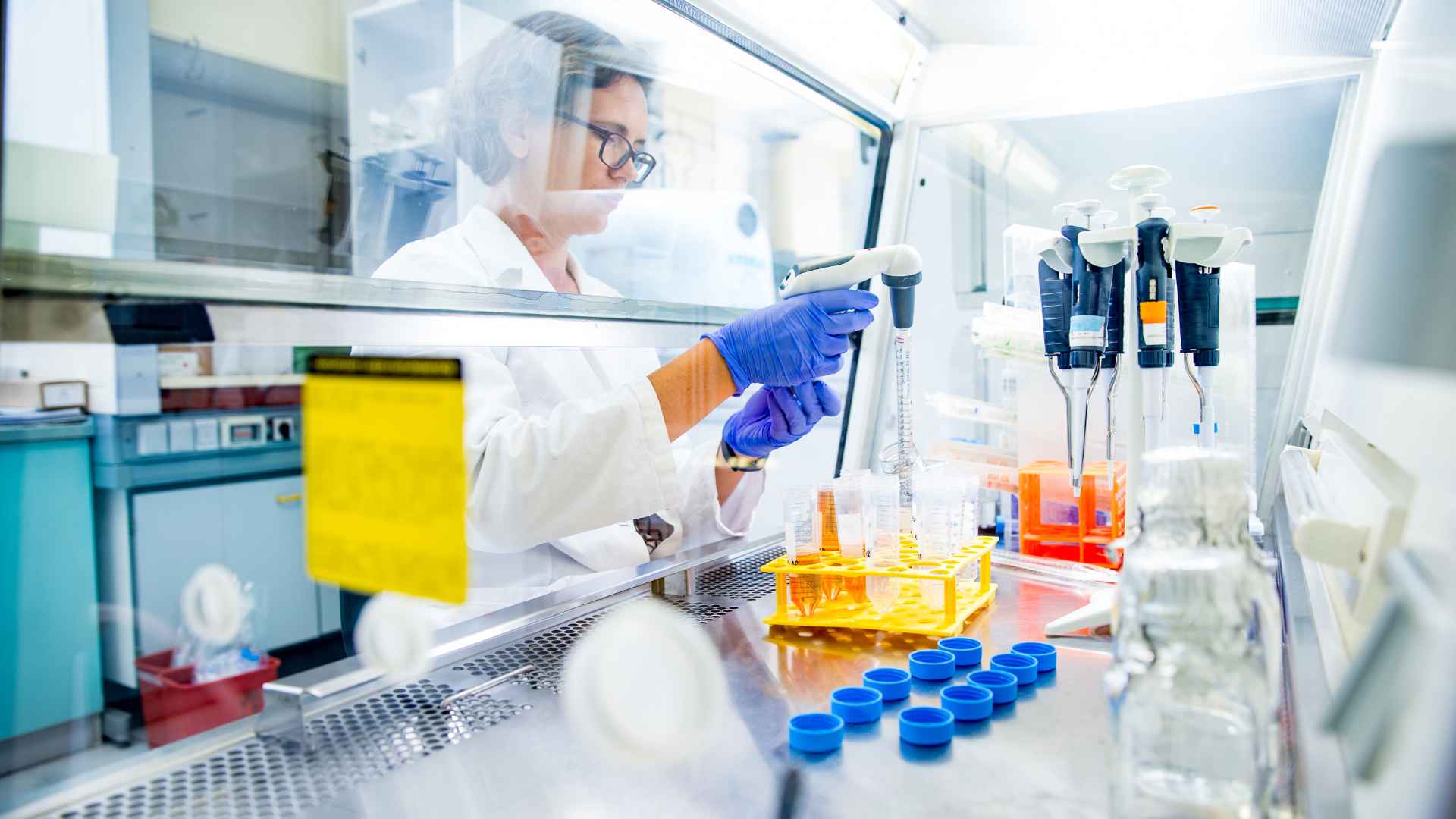Cytotoxicity assays have become a cornerstone in the field of medical research, offering insights into how substances affect cell health and viability. These tests are crucial for evaluating the potential therapeutic effects or toxic side effects of new compounds, making them indispensable in drug development and safety assessments.
With a variety of techniques available, from colorimetric assays to high-throughput screening methods, researchers can select the most appropriate approach based on their specific needs. This flexibility allows for the detailed analysis of compound interactions with cells, providing valuable data that can steer the direction of future studies and innovations.
Importance of Cytotoxicity Assays in Medical Research
In the area of medical research, cytotoxicity assays stand as a cornerstone for understanding the implications of various substances on cell health and viability. These assays play a pivotal role in scrutinizing the therapeutic effects and potential toxicity of new compounds, making them indispensable in the journey from lab bench to bedside.
Primarily, cytotoxicity assays offer a window into the interaction between compounds and cells. They serve not only to highlight the therapeutic potential of a substance but also to flag any toxic effects that could limit its usability as a medication. This dual functionality underscores the importance of these assays in early drug development stages, where safety and efficacy are paramount.
Besides, the versatility of cytotoxicity assays is demonstrated through their application across a multitude of cell-based models. Facilities like Da-Ta Biotech, equipped with a broad arsenal of human and rodent cell lines and disease models, leverage cytotoxicity assays to explore the vast terrain of pharmacological research. From determining the EC50 in anti-cancer drug screening to evaluating the rate of wound healing, these assays provide critical data that fuel innovation and discovery in the biotech industry.
Researchers benefit from the flexibility and robustness offered by companies like Da-Ta Biotech, where in-house testing capabilities streamline the research and development process. By utilizing established protocols or adapting specific standard operating procedures (SOPs), they can effectively sidestep the high costs and logistical challenges associated with setting up and maintaining laboratory operations.
Under the guidance of experts like Dr. Rinat Borenshtain – Koreh and her team, Da-Ta Biotech exemplifies how tailored cytotoxicity assays can propel research from conceptual stages to impactful presentations for investors. This symbiotic relationship between cytotoxicity assays and medical research not only accelerates the discovery of potential drugs but also ensures that they meet the rigorous safety standards required for clinical use. Through the meticulous analysis of compound interactions with cells, cytotoxicity assays continue to shape the future of medical innovations, guiding researchers towards safer and more effective therapeutic interventions.
Different Techniques for Cytotoxicity Evaluation
Cytotoxicity assays serve as critical tools in the biotechnological and pharmaceutical industries, measuring the potential harmful effects of various compounds on cell health and viability. With advancements in research methodologies, several techniques have emerged, each with its unique advantages and applications. Below are key methodologies employed to evaluate cytotoxic effects in cell-based models.
MTT Assay
The MTT assay is a colorimetric assay for assessing cell metabolic activity, a surrogate marker for cell viability. Cells are exposed to a tetrazolium compound, and viable cells with active metabolism convert MTT into a purple formazan. The amount of formazan, quantitatively measured by its absorbance, directly correlates to the number of living cells. This technique is widely used due to its simplicity and reliability.
LDH Release Assay
Lactate dehydrogenase (LDH) is an enzyme present in the cytoplasm of cells, released into the surrounding medium upon cell membrane damage or lysis. The LDH release assay quantifies this enzyme’s activity in the medium, serving as an indicator of cytotoxicity. Its non-destructive nature allows for the real-time monitoring of cytotoxic effects in cell culture.
Flow Cytometry
Flow cytometry offers a more sophisticated approach to cytotoxicity testing, providing data on cell size, granularity, and viability in a single experiment. This technique can differentiate between live, dead, and apoptotic cells, offering a comprehensive overview of compound effects on cell populations.
Real-Time Cell Analysis (RTCA)
RTCA systems monitor cell viability, morphology, and adhesion in real-time without incorporating labels. This method relies on electrical impedance to detect changes in cell status, offering high sensitivity and enabling continuous monitoring over extended periods. RTCA is particularly useful for kinetic studies and understanding compound effects over time.
Each cytotoxicity assay technique has its specific applications and limitations, underscoring the importance of selecting the appropriate method based on the research objectives and the nature of the compounds being tested. Researchers at Da-Ta Biotech leverage these diverse techniques, combined with their extensive experience in cell-based models, to help comprehensive evaluations of cytotoxicity. This multifaceted approach ensures that potential therapeutic agents are screened effectively, accelerating the journey from discovery to development while emphasizing safety and efficacy.
Applications of Cytotoxicity Assays in Drug Development
In the rigorous journey of drug development, cytotoxicity assays hold a pivotal role in early-stage screening and safety evaluation. These assays offer vital insights into the potential risks a new drug candidate may pose to human cells, thereby guiding researchers in making informed decisions about the continuation or modification of the drug development process.
Screening for Drug Safety
One of the primary applications of cytotoxicity assays is in the screening for drug safety. By evaluating how a drug affects cell viability, researchers can identify compounds that may be toxic at certain concentrations. This screening is critical, as it helps to eliminate harmful compounds early in the drug development process, saving both time and resources.
Determining Therapeutic Index
Another key application is the determination of a drug’s therapeutic index—the ratio between the toxic and therapeutic doses of a drug. Cytotoxicity assays provide essential data for calculating this index, which is crucial for understanding the safety margin of a drug. A narrow therapeutic index may suggest that a drug has to be administered with caution, whereas a wide index indicates a safer dosage range.
Optimization of Drug Formulations
Drug formulations can also be optimized with the help of cytotoxicity assays. By testing different formulations of a drug, researchers can not only gauge their safety but also identify the most effective combination that offers the highest efficacy while minimizing cell damage. This optimization process is vital for developing drugs that are both effective and safe for human use.
Supporting Regulatory Submissions
Cytotoxicity assay data are often a requirement in the regulatory submission process. Regulatory authorities like the FDA demand comprehensive safety profiles of new drug candidates, of which cytotoxicity data are an integral part. Having robust cytotoxicity data can help the approval process, making it a crucial step in drug development.
Da-Ta Biotech leverages the power of cytotoxicity assays in all these areas, offering their expertise to the biotechnology industry. With a diverse array of models and cell lines, Da-Ta Biotech supports drug developers in exploring the complexities of cytotoxicity evaluation, ensuring that new therapeutic agents are both effective and safe for clinical use.
Advancements in Cytotoxicity Testing
The field of cytotoxicity testing has seen significant advancements in recent years, largely driven by the need for more accurate, efficient, and cost-effective methods to evaluate the safety and efficacy of potential therapeutic agents. Da-Ta Biotech, at the forefront of these developments, employs state-of-the-art cytotoxicity assays to deliver comprehensive evaluations for the biotechnology industry.
One of the key advancements in this area is the integration of high-throughput screening (HTS) technologies. These technologies enable researchers to rapidly assess the cytotoxic effects of a large number of compounds on various cell lines. This is crucial for drug development processes, where time and accuracy are of the essence. Also, the ability to screen a vast array of compounds significantly increases the chance of identifying potential drug candidates with fewer adverse effects on human cells.
Another milestone in cytotoxicity testing is the adoption of 3D cell culture models. Unlike traditional 2D cultures, 3D models better mimic the natural environment of cells in the human body, providing more relevant data about a drug’s efficacy and safety. Da-Ta Biotech utilizes these models to offer insights that are closer to the in vivo response, thereby enhancing the predictability of a compound’s performance in clinical trials.
Besides, the application of digital imaging and automated analysis has revolutionized cytotoxicity assays. These technologies allow for real-time monitoring of cell health and behavior, yielding dynamic responses to drugs over time. Automated analysis also reduces human error and increases the throughput of cytotoxicity testing, making the process more efficient and reliable.
Instrumental in these advancements are artificial intelligence (AI) and machine learning algorithms. They predict cytotoxicity outcomes based on vast datasets, thereby refining the drug development process. Researchers can now anticipate potential safety concerns earlier in the development cycle, guiding their decision-making towards safer and more effective formulations.
Da-Ta Biotech’s commitment to leveraging these advancements ensures that cytotoxicity assays remain a cornerstone of drug development. Their use of cutting-edge technologies and methodologies not only accelerates the pace of discovery but also enhances the precision in evaluating the potential impacts of new therapeutic agents on human cells.
Conclusion
Da-Ta Biotech’s pioneering efforts in cytotoxicity testing mark a significant leap forward in the biotechnology industry. By harnessing the latest technologies and methodologies, they’re setting new standards for accuracy and efficiency in evaluating therapeutic agents. The integration of advanced tools not only enhances the precision of these assays but also accelerates the drug development process. With these innovations, Da-Ta Biotech ensures that cytotoxicity testing remains a vital component in the quest for safer, more effective treatments. Their work exemplifies the ongoing evolution of biotechnological research and its critical role in advancing healthcare.






